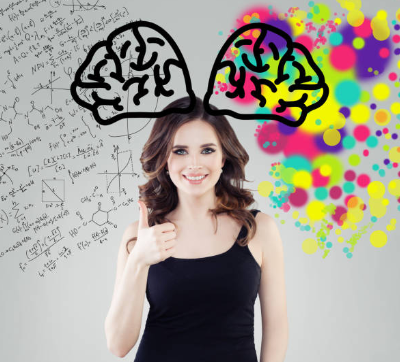Depression can make everyday life feel heavy, overwhelming, and isolating. If you’re struggling with low mood, lack of motivation, or emotional numbness, you’re not alone—and there are tools that can help. One highly effective approach is Dialectical Behavior Therapy (DBT).
Originally developed for borderline personality disorder, DBT is now widely used to treat depression by teaching practical, science-backed skills. These include Mindfulness, Emotion Regulation, Distress Tolerance, and Interpersonal Effectiveness—each designed to help you manage emotions, reduce negative thinking, and regain control of your life.
In this guide, you’ll discover the most powerful DBT skills for depression, real-life examples of how to use them, and tips for applying them daily—even without a therapist. Whether you’re in treatment or managing on your own, DBT can help you move from surviving to thriving.

Why DBT Works for Depression
DBT works for depression because it teaches practical, structured skills to manage intense emotions, reduce negative thinking, and improve daily functioning. Unlike traditional talk therapy, DBT blends acceptance with change—helping you acknowledge painful feelings while building healthier habits. Its four core areas—Mindfulness, Emotion Regulation, Distress Tolerance, and Interpersonal Effectiveness—equip you to handle low moods, stress, and relationship struggles more effectively. For many, depression feels paralyzing; DBT offers clear, step-by-step tools to break that cycle and regain control. With consistent practice, DBT helps transform how you cope, connect, and care for yourself.
Core DBT Skills for Depression
Dialectical Behavior Therapy (DBT) is built on four primary skill areas, each targeting different aspects of emotional and psychological wellbeing. For individuals experiencing depression, these skills provide structure, relief, and long-term tools to manage symptoms.
Let’s explore each category and how it supports healing from depression.
1. Mindfulness: Becoming Present and Aware
Mindfulness is the foundation of all DBT skills. Depression often drags the mind into the past (regret, guilt) or the future (worry, hopelessness). Mindfulness helps you stay grounded in the present moment—where healing begins.

Mindfulness Skills:
- Observe: Notice your thoughts, feelings, and physical sensations without reacting or judging.
- Describe: Put words to your experience (“I feel tightness in my chest”).
- Participate: Fully engage in the moment without distraction or self-consciousness.
- One-Mindfully: Focus on one task at a time—whether it’s eating, walking, or brushing your teeth.
- Non-Judgmentally: Accept thoughts and feelings as they are, without labeling them good or bad.
How it helps depression:
Mindfulness slows down racing thoughts, reduces overthinking, and helps you reconnect with life. It offers a sense of control over your focus—something often lost during depressive episodes.
Try This:
Focus only on your breath for 60 seconds. When your mind wanders (and it will), gently bring it back. Repeat daily.
2. Emotion Regulation: Managing Intense Emotions
Depression is often rooted in long-term emotional dysregulation—overwhelming sadness, irritability, or numbness. DBT’s emotion regulation skills are designed to help you understand and manage your emotional experiences more effectively.

Emotion Regulation Skills:
a) Identifying and Labeling Emotions
Understanding what you’re feeling is the first step to managing it. Many people with depression describe emotions as “blurry.” DBT teaches you to be specific—e.g., “sad,” “angry,” “lonely”—which gives you clarity and direction.
b) Accumulating Positives (Short-Term and Long-Term)
Depression tends to strip away joy. This skill encourages you to intentionally do things that bring even small amounts of pleasure—watching a favorite show, talking to a friend, or walking outdoors.
Long-term version: Make time for values-based goals (e.g., learning a skill, volunteering, or returning to hobbies) to build a more fulfilling life.
c) Opposite Action
One of the most powerful DBT techniques for managing depression. When you feel like isolating, instead reach out. If you feel like staying in bed, take a short walk. By doing the opposite of what the emotion urges, you shift your mood and energy.
d) Check the Facts
Often, depression distorts reality. “I’m a failure,” “No one cares,” “I’ll never get better.” This skill helps you challenge those thoughts with actual evidence. Ask: What facts support or contradict this thought?
How it helps depression:
These tools help stabilize mood swings, create emotional momentum, and reduce reactivity to triggers. You learn to act from logic and values—not emotion alone.
Try This:
When you feel like canceling plans, do the opposite and go. Observe how your mood shifts afterward.
3. Distress Tolerance: Surviving the Storm
Depression can bring on overwhelming pain—emotional or even physical. In those moments, the goal isn’t to “fix” the problem instantly, but to survive the crisis without making things worse. That’s what distress tolerance skills are for.

Distress Tolerance Skills:
a) TIPP (Temperature, Intense Exercise, Paced Breathing, Progressive Relaxation)
This set of quick techniques changes your body chemistry to calm you down. For example, holding a cold pack to your face or doing 30 seconds of jumping jacks can regulate emotional intensity.
b) Self-Soothing with the Five Senses
Engage your senses to comfort yourself: listen to calming music, light a scented candle, drink a warm beverage, or wrap yourself in a soft blanket.
c) Radical Acceptance
Acceptance doesn’t mean approval. It means acknowledging that things are the way they are without resisting reality. This reduces suffering caused by denial or wishing things were different.
d) IMPROVE the Moment
A collection of strategies to shift your perspective—use imagery, meaning, prayer (or personal values), relaxation, and encouragement to get through difficult times.
e) PLEASE
This skill targets physical vulnerabilities that worsen mood:
- Physical illness – take care of health needs
- Limit mood-altering drugs
- Eat balanced meals
- Avoid sleep disruption
- Sleep regularly
- Exercise
How it helps depression:
Distress tolerance helps you survive emotional storms without self-harming, shutting down, or sabotaging recovery. These tools act like emotional “first aid.”
Try This:
When overwhelmed, hold ice cubes in your hands or splash cold water on your face. It quickly grounds you.
4. Interpersonal Effectiveness: Building Supportive Relationships
Although not depression-specific, strong relationships are key to emotional wellbeing. Depression often causes isolation, resentment, or miscommunication. DBT’s interpersonal effectiveness skills help you ask for what you need, set healthy boundaries, and strengthen your connections.

Key Skills:
- DEAR MAN: Assert your needs while maintaining respect
- Describe, Express, Assert, Reinforce, Mindful, Appear confident, Negotiate
- GIVE: Keep relationships healthy and balanced
- Gentle, Interested, Validate, Easy manner
- FAST: Maintain self-respect in interactions
- Fair, no Apologies, Stick to values, Truthful
How it helps depression:
Better communication leads to more support and less conflict—two essential pieces when managing low moods.
Try This:
Practice saying “no” to something small this week, and notice how you feel afterward.
How These Skills Work Together
Each DBT skill plays a unique role in depression recovery:
| Skill Category | Primary Benefit |
|---|---|
| Mindfulness | Reduces rumination and increases presence |
| Emotion Regulation | Stabilizes mood and boosts motivation |
| Distress Tolerance | Prevents emotional spirals and shutdowns |
| Interpersonal | Improves support system and confidence |
Using these skills consistently leads to increased emotional resilience, better coping strategies, and a more balanced outlook—exactly what’s needed to overcome depressive cycles.
How to Integrate DBT Skills into Daily Life
| Time | Activity | Recommended Skill |
|---|---|---|
| Morning | Gentle stretch or walk | Opposite Action + PLEASE |
| Commute | Observing surroundings fully | One Mindful |
| Work Break | 5-minute mindfulness pause | Mindfully Participate |
| Evening | Gratitude journaling | Accumulating Positives |
| Night | Reflect on negative thoughts | Check the Facts |
| Weekly | Review diary card | Emotion Regulation + Distress Tolerance |
Symptom-Specific Skill Mapping
- Low energy / lethargy → Opposite Action
- Ruminating thoughts → One Mindful & Mindful Participation
- Negativity bias → Accumulating Positives, Check the Facts
- Physical neglect → PLEASE skill chain
- Social isolation → Interpersonal effectiveness
FQAs
1. What is DBT for depression?
DBT is a therapy that teaches skills to manage emotions, reduce negative thinking, and improve mood.
2. Can I use DBT without a therapist?
Yes, many skills can be learned through books, apps, or self-practice.
3. Which DBT skill helps most with depression?
Opposite action, mindfulness, and emotion regulation are especially helpful.
4. How long before DBT helps?
Some feel better in weeks; long-term use brings lasting change.
5. Is DBT just for BPD?
No—it’s also effective for depression, anxiety, and more.
6. How is DBT different from CBT?
DBT adds mindfulness and emotion tools to traditional thought-based CBT.
7. Can DBT stop depression from coming back?
Yes, DBT builds skills to prevent relapse and stay emotionally balanced.
Conclusion
Depression can feel overwhelming, but you don’t have to face it without tools. Dialectical Behavior Therapy (DBT) offers practical, proven strategies to manage emotional pain, build resilience, and take back control of your life. By practicing core DBT skills—Mindfulness, Emotion Regulation, Distress Tolerance, and Interpersonal Effectiveness—you can reduce symptoms, improve your relationships, and regain hope.
Whether you’re in therapy or exploring healing on your own, DBT skills for depression are a powerful way to create real, lasting change. Start small, stay consistent, and remember: progress is possible—even if it’s one mindful breath at a time.
More Articles About the Brain
Ultimate List of Words for Memory Test
How to Focus Better in School: Effective Study Strategies for Students
Left and Right Brain Exercises to Boost Creativity, Focus & Performance
How to Concentrate Better While Studying



